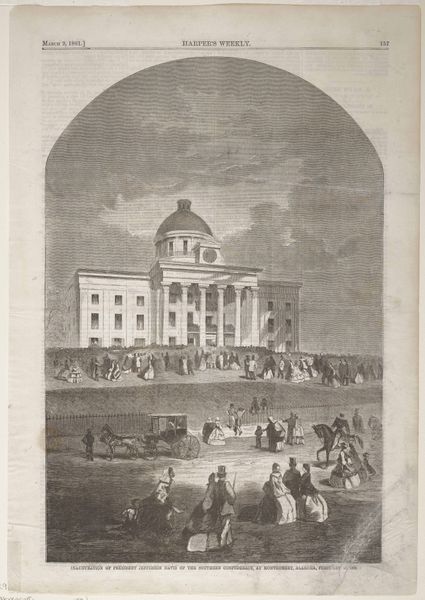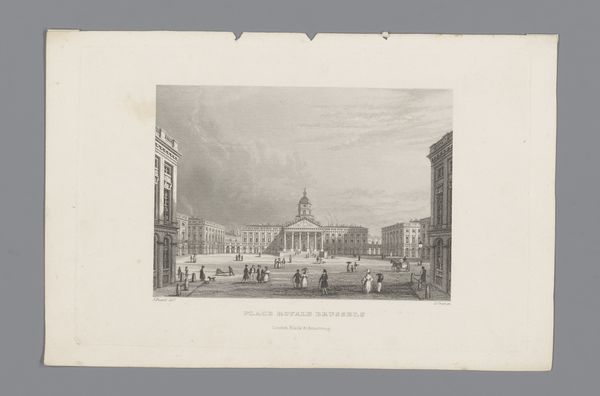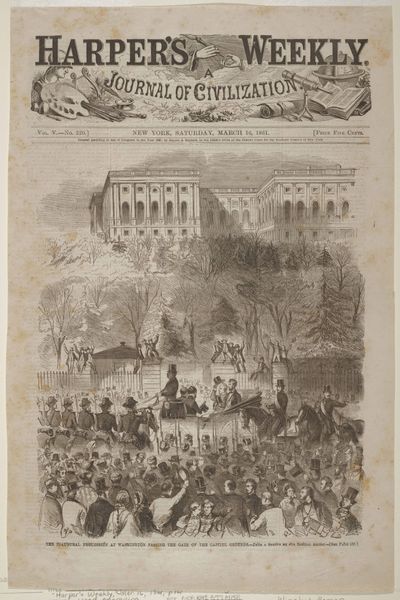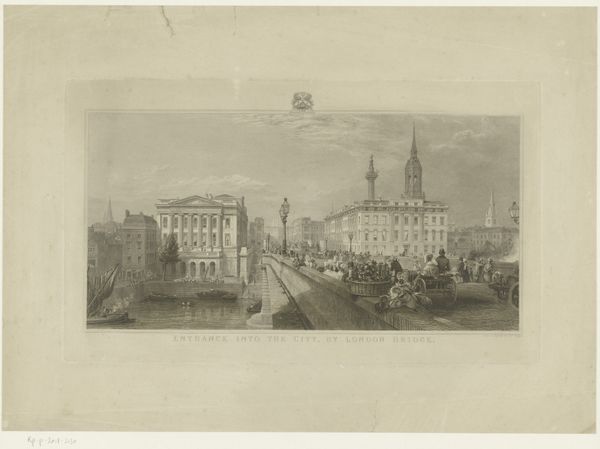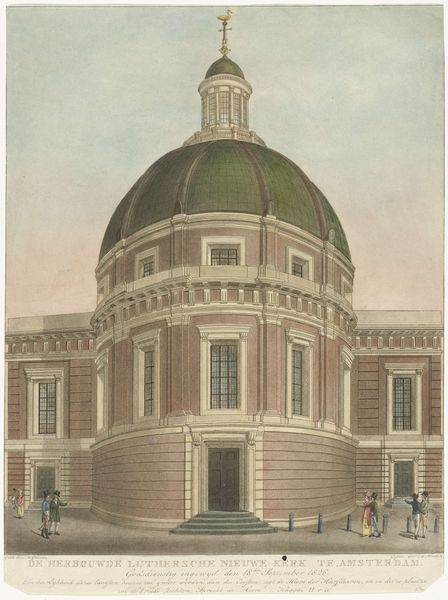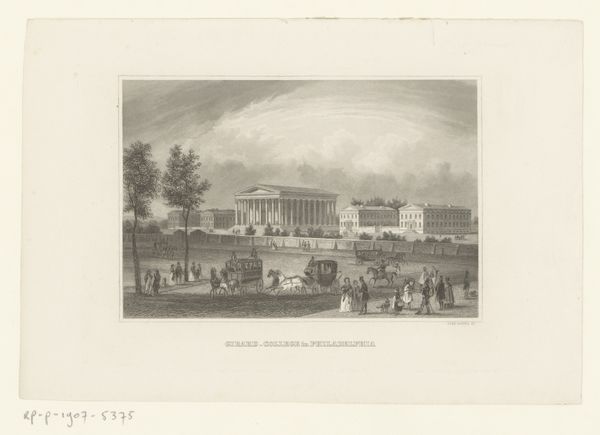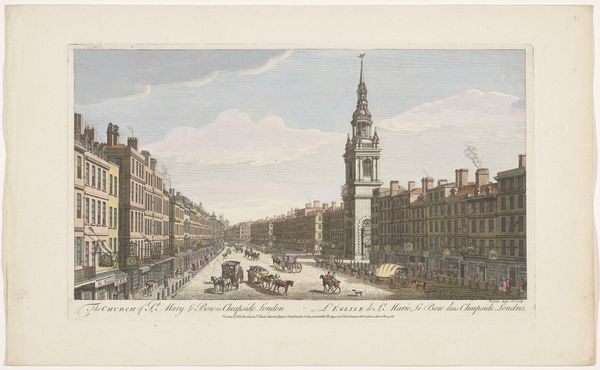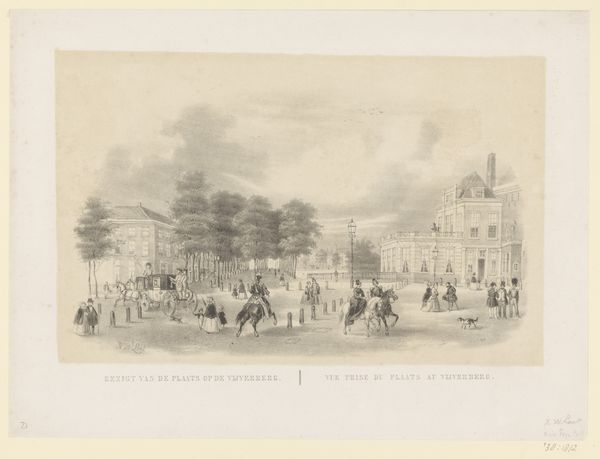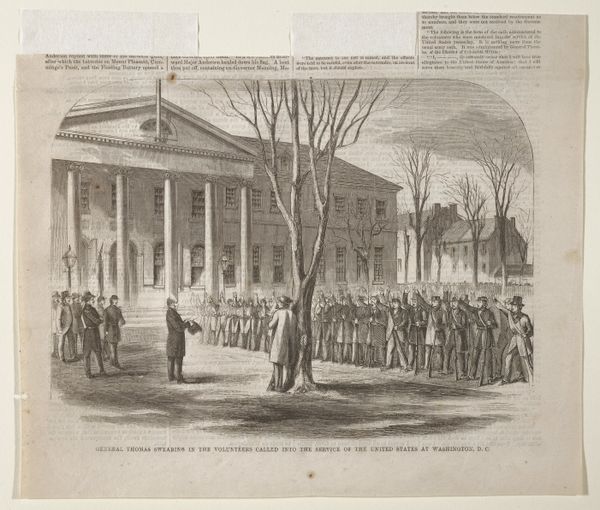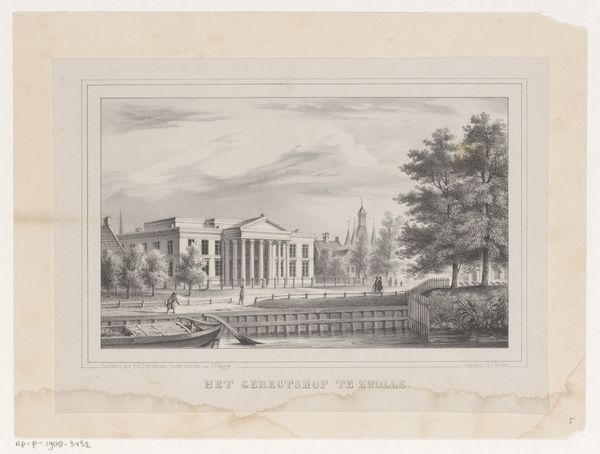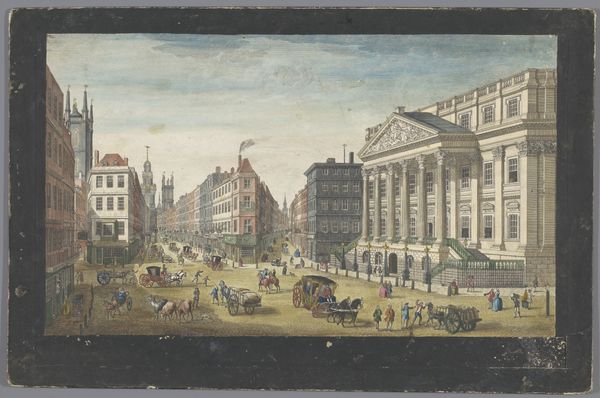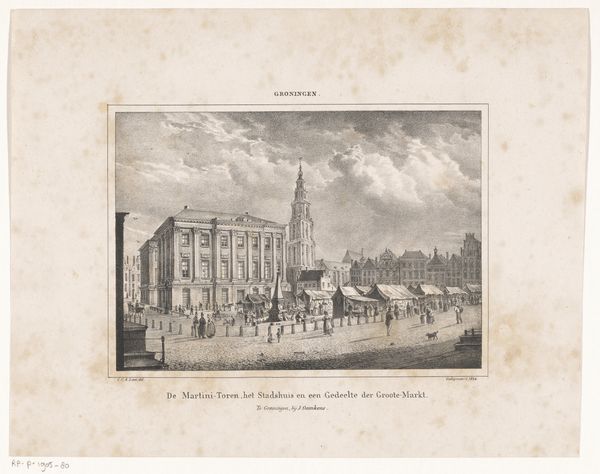
drawing, coloured-pencil, print
#
drawing
#
coloured-pencil
# print
#
landscape
#
coloured pencil
#
cityscape
#
history-painting
#
academic-art
Dimensions: Image: 20 5/16 × 16 5/8 in. (51.6 × 42.3 cm) Sheet: 25 3/16 × 18 11/16 in. (64 × 47.4 cm)
Copyright: Public Domain
Curator: Before us, we have a "Design for the Washington Memorial, New York" dating back to 1844. This colored pencil and print piece, currently held at the Metropolitan Museum of Art, gives us a glimpse into the architectural aspirations of the time. Editor: Immediately, the imposing structure strikes me. The monument's form, with its repetitive colonnades and domed top, displays a real clarity. The soft, pale hues enhance the architectural solidity with an ethereal mood. Curator: The design is fascinating, as it reflects the 19th-century American impulse to define its identity through monumental architecture. In the social climate, to commemorate George Washington, after whom much land was seized and countless peoples lives subjugated to serve US capitalistic efforts, speaks volumes about who we venerate as heros, and who we omit and leave behind in the chronicles of history. The fact that it never came to fruition might reflect the contentious political undercurrents present in New York and the US at the time. Editor: I see the structure of power here too, but it seems to be embodied architecturally more so. I see the classical elements used almost self-consciously. Take those ordered columns—they appear so rational. And it looks like it is set against a vast urban panorama that adds a sense of spatial depth to the monument. Do you find any relationship between the monument’s form and the ideas of American selfhood in the context of burgeoning cityscapes at the time? Curator: Well, given the specific details of New York in 1844, it's almost impossible not to read a deliberate message. Considering the intense industrial expansion, race, and class tensions bubbling under the surface, one cannot divorce it from the period of fervent capitalist ideology where class differences where amplified alongside colonial dispossession that formed the country itself. Editor: It’s fascinating how the drawing operates on so many levels—structurally, and socially. Thank you for lending insights into its historical undertones and contexts. Curator: And thank you for reminding us to think critically not only about design, but who it's created for and in whose image we immortalize people.
Comments
No comments
Be the first to comment and join the conversation on the ultimate creative platform.
